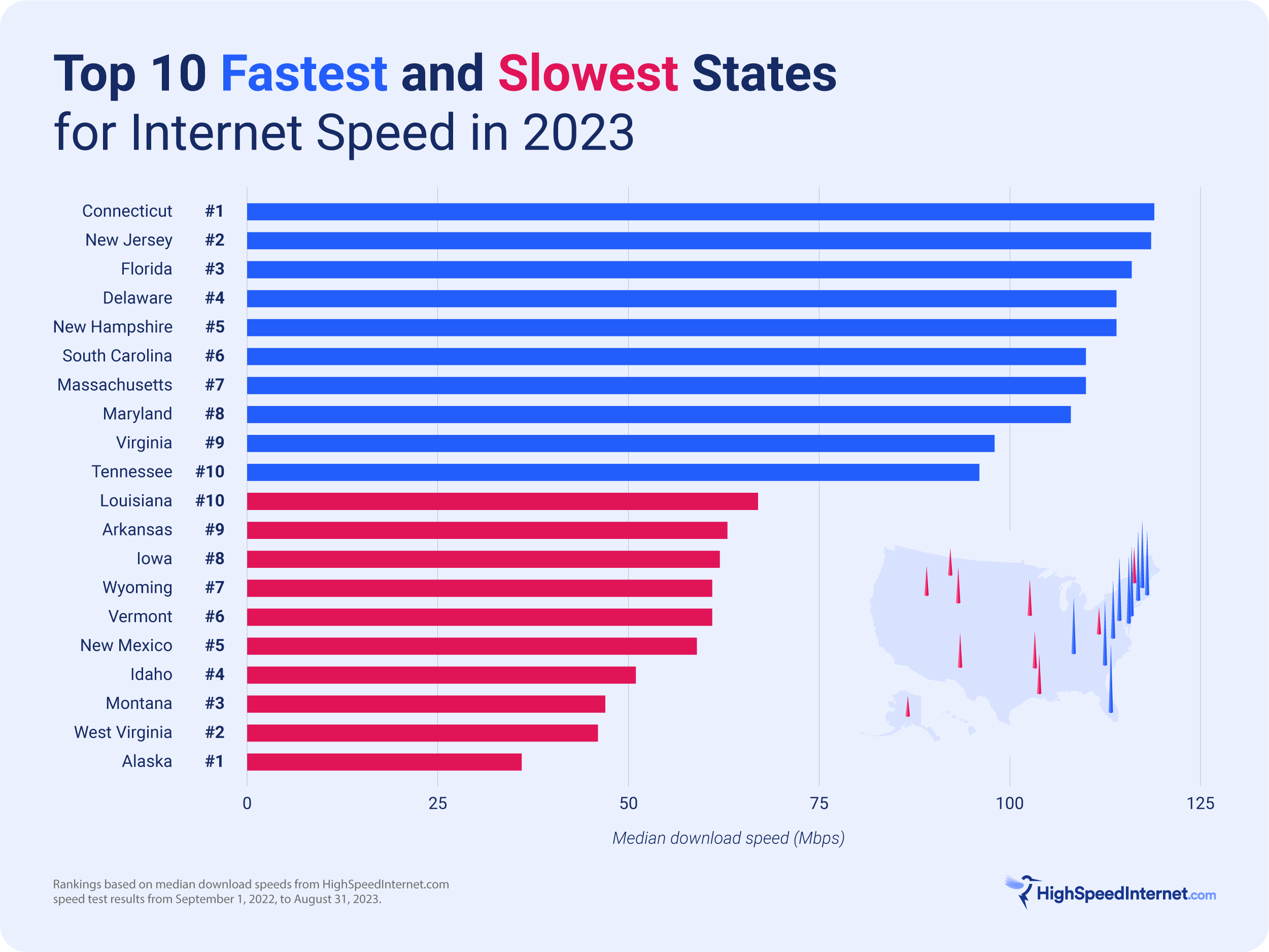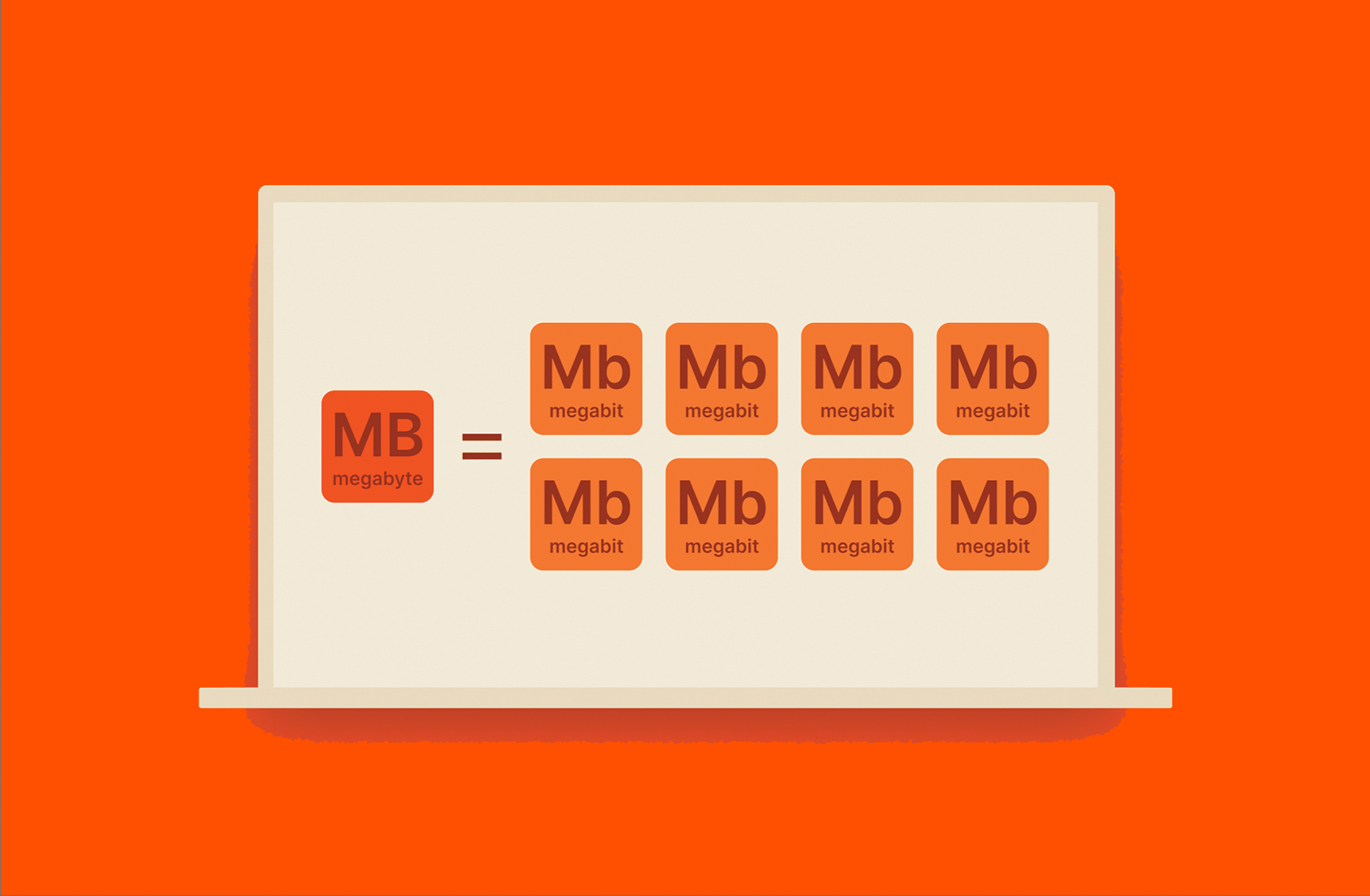The Future of Internet Speeds: Trends in Megabits Per Second
The Future of Internet Speeds: Trends in Megabits Per Second
Blog Article
Just How Megabits Per Second Influence Your Online Activities
The principle of megabits per second (Mbps) plays a critical duty in forming our on the internet experiences. Greater Mbps can enhance efficiency and reduce disruptions, while insufficient speeds might promote disappointment and ineffectiveness.
Recognizing Megabits Per Second
When taking into consideration web speed, it's important to recognize the idea of megabits per second (Mbps), which functions as a typical dimension for data transfer prices. This metric quantifies just how much information can be transferred over a web connection in one second, giving a clear understanding of efficiency abilities - Megabits Per Second. For context, one megabit is equal to one million bits, and Mbps is commonly made use of to reveal transmission capacity for numerous on the internet activities
A higher Mbps shows a faster internet connection, making it possible for customers to do jobs such as downloading and install documents, browsing web sites, and engaging in on the internet video gaming more successfully. For example, common browsing needs around 1-5 Mbps, while streaming high-def video clip may require 5-25 Mbps. Understanding these requirements is essential for determining the suitable web speed required for specific tasks.
Furthermore, the number of tools connected to a network can impact overall efficiency. Several individuals streaming, pc gaming, or downloading all at once can stress offered transmission capacity, causing slower rates - Megabits Per Second. Reviewing individual online behaviors and requirements is essential in selecting a net strategy that straightens with one's requirements, making sure a seamless digital experience
Streaming and Buffering Issues
Streaming high-definition content has come to be a staple of modern-day on the internet amusement, yet it is frequently accompanied by frustrating buffering problems. These interruptions can significantly detract from the watching experience, causing dissatisfaction and prospective loss of target market engagement. Buffering occurs when the data sent from the streaming solution is not received quickly sufficient to keep a smooth playback, frequently due to not enough internet speed measured in megabits per second (Mbps)

In addition, real-time streaming can be affected by network blockage, which takes place when several tools share the exact same data transfer. As a result, maximizing link rate and ensuring sufficient Mbps is important for a seamless streaming experience. As streaming solutions remain to develop, understanding the influence of Mbps on buffering concerns stays important for consumers seeking undisturbed amusement.
Online Video Gaming Efficiency
The influence of web rate on on-line activities expands beyond streaming, substantially affecting online video gaming efficiency. In competitive pc gaming, low latency and high transmission capacity are important for a seamless experience. A fast link decreases lag, allowing gamers to react swiftly to in-game events, which can be the difference in between victory and loss.
Data transfer, determined in megabits per second (Mbps), plays an essential duty in supporting numerous tools and gaming systems simultaneously. Inadequate bandwidth can lead to dropped links or decreased game quality, negatively influencing gameplay. For circumstances, on-line multiplayer games require substantial information transfer, particularly during peak gaming hours when numerous gamers are online.
Additionally, the kind of video game can additionally dictate the essential internet rate. Busy first-person shooters require greater rates to keep responsiveness, while turn-based approach games may work fairly well on lower speeds. As online gaming remains to develop, with increasing graphical integrity and more complicated multiplayer environments, the need for higher Mbps will only magnify. As a result, gamers need to ensure they have sufficient net rate to boost their video gaming performance and total experience. Purchasing a robust web connection is essential for players aiming to enhance their his comment is here efficiency and satisfaction.
Video Conferencing High Quality
In today's electronic landscape, video clip conferencing top quality is greatly affected by net speed, particularly in regards to bandwidth and latency. High-grade video clip calls call for adequate bandwidth to transmit sound and video data flawlessly. Generally, a minimum of 1.5 Mbps upload and download speeds is advised for standard meaning video, while high-def video clip conferencing typically requires at the very least 3 Mbps.
Latency, or the hold-up between sending and receiving information, also plays an essential role in the individual experience. Higher latency can lead to resemble, lag, and disjointed interactions, which can prevent collaboration and involvement during conferences.
Moreover, multiple individuals in a video meeting can stress offered bandwidth, requiring even greater rates. Network congestion, often caused by synchronised activities like streaming or downloading, can additionally degrade video clip high quality. Hence, for organizations counting on video clip conferencing for remote collaboration, comprehending the partnership between megabits per total and second communication top quality is essential for keeping productivity and improving digital communications.
Picking the Right Internet Plan
Choosing an appropriate web strategy is essential for guaranteeing optimal performance in different on the internet tasks, particularly in settings that demand high transmission capacity, such as video conferencing and online video gaming. Megabits Per Second. When taking into consideration an internet strategy, it is vital to evaluate both the speed and information allowance to match your details usage demands
For families with several individuals taking part in synchronised activities, a strategy using higher megabits per second (Mbps) is advised. Usually, a minimum of 25 Mbps appropriates for standard streaming and browsing, while plans surpassing 100 Mbps are more effective for even more intensive tasks. In addition, consider the nature of your online tasks; video clip conferencing calls for at least 1.5 Mbps upload rate, while on the internet gaming may need a lower latency but constant link.
Limitless data strategies can protect against strangling and disruptions, especially if hefty usage is prepared for. By thoughtfully choosing a web strategy tailored to your demands, you can enhance your on-line experience, making sure smooth, undisturbed access to your preferred tasks.
Final Thought
Finally, the value of megabits per second (Mbps) in shaping online tasks can not be overemphasized. Higher Mbps promotes seamless streaming, reduces buffering, improves pc gaming experiences, and makes sure high-quality video clip conferencing. Alternatively, insufficient transmission capacity can cause frustrating disruptions and diminished efficiency throughout various jobs. A detailed understanding of private or household Mbps requirements is necessary for choosing a proper net strategy that properly sustains diverse online activities and individual needs.

Typically, this contact form a minimum of 25 Mbps is ideal for common streaming and browsing, while strategies surpassing 100 Mbps are better for more intensive jobs. Furthermore, take into consideration the nature of your online activities; video conferencing needs at least 1.5 Mbps submit rate, while on-line pc gaming may need a reduced latency however constant link.
Report this page